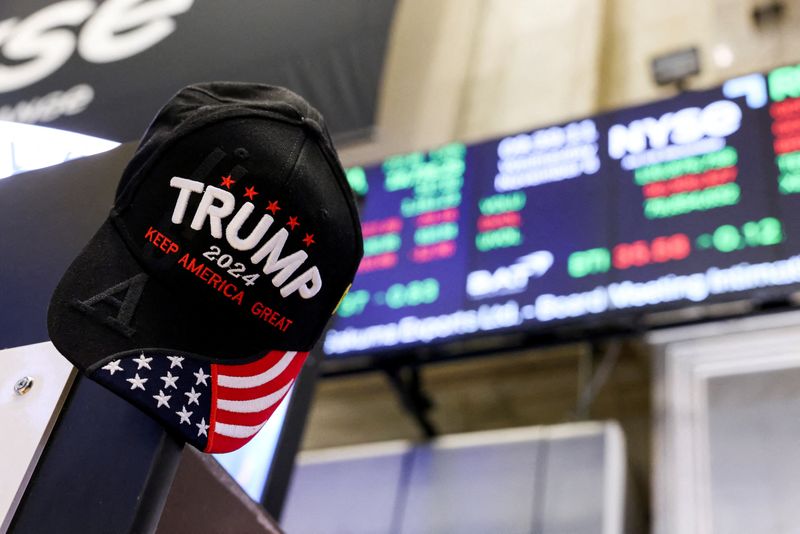(Corrects paragraph 15 to say the Dow is on track for its biggest two-week jump since late 2022 and not for its biggest weekly gain since October 2022)
By Johann M Cherian and Sukriti Gupta
(Reuters) -Wall Street’s main indexes struggled for direction on Friday, as investors avoided big bets and assessed fresh data to gauge the health of the economy, while Boeing (NYSE:) dipped after warning of a bigger-than-expected quarterly loss.
An S&P Global survey showed that business activity slowed to a ninth-month low in January amid rising price pressures, but firms reported higher hiring, supporting the Federal Reserve’s cautious approach to monetary policy this year.
Separately, the University of Michigan’s final estimate on consumer sentiment dropped to 71.1 from a previous estimate of 73.2.
The central bank is expected to meet next week and traders see no change to borrowing costs. However, they now see the Fed delivering its first rate cut in June, according to data compiled by LSEG.
At 11:35 a.m. ET, the fell 51.30 points, or 0.12%, to 44,513.77, the gained 0.78 points, or 0.01%, to 6,119.49 and the lost 6.01 points, or 0.03%, to 20,048.04.
Seven of the 11 S&P 500 sectors rose, with utilities leading with a 0.9% gain.
On the earnings front, American Express (NYSE:) reported a 12% jump in fourth-quarter profit. Its shares, however, fell 3.1% and weighed on the blue-chip Dow.
Boeing lost 0.3% after the planemaker warned of a fourth-quarter loss of about $4 billion. Shares of the company, which is scheduled to report quarterly results on Tuesday, had logged their biggest annual drop since the pandemic in 2024.
Verizon (NYSE:) rose 1.5% after the carrier reported higher-than-expected fourth-quarter subscriber additions.
Tariffs are high on investors’ minds after President Donald Trump referred to tariff policies multiple times at separate events this week but did little to lay out entire details of the surcharges he plans to impose on trade partners of the United States.
The president has said tariffs on Mexico, Canada, China and the European Union could be announced on Feb. 1, but analysts say major plans could be announced on April 1.
Investors have negatively reacted to reports about potential tariffs, on worries that they could spark a global trade war, add to inflation pressures and slow the Fed’s pace of interest rate cuts.
“President Trump is using tariffs as a big stick. He likes to use them as economic leverage and he’s going to continue to do that both with Canada, Mexico and with China to negotiate better trade deals,” said Kyle Wool, CEO of Dominari Securities.
The benchmark S&P 500 closed Thursday’s session at a record high for the second time in over a month after Trump called for taxes, oil prices and interest rates to be lowered at the World Economic Forum in Davos, Switzerland.
On a weekly basis, Wall Street’s main indexes are set for their second straight week of advances, with the blue-chip Dow on track for its biggest two-week jump since late 2022.

Advancing issues outnumbered decliners by a 1.96-to-1 ratio on the NYSE and by a 1.53-to-1 ratio on the Nasdaq.
The S&P 500 posted 19 new 52-week highs and one new low, while the Nasdaq Composite recorded 55 new highs and 43 new lows.
#Wall #muted #investors #assess #economic #data #Boeing #slips #Reuters